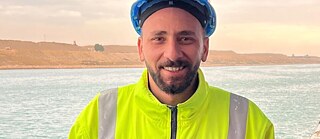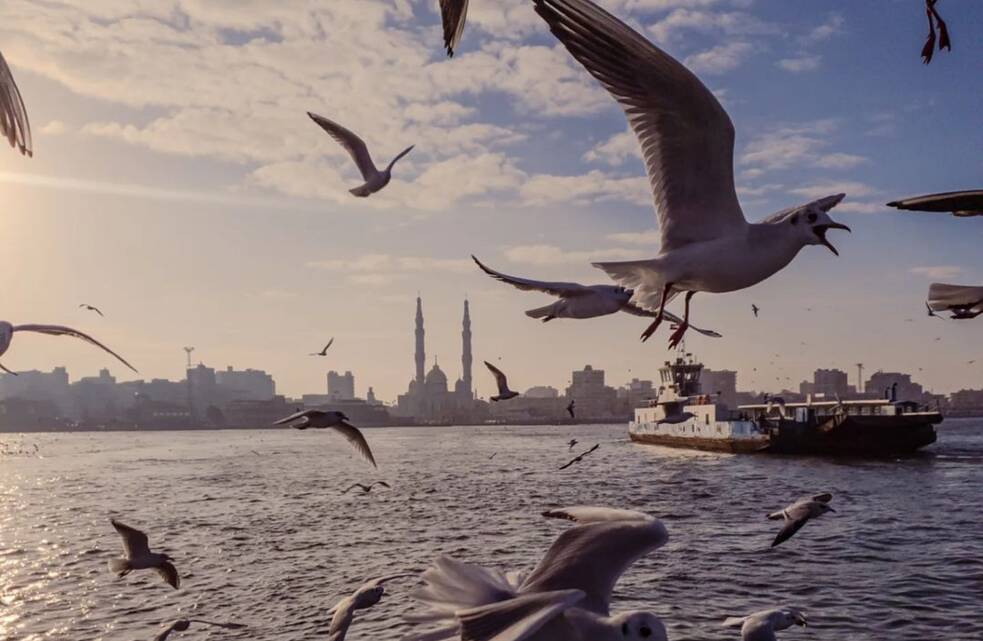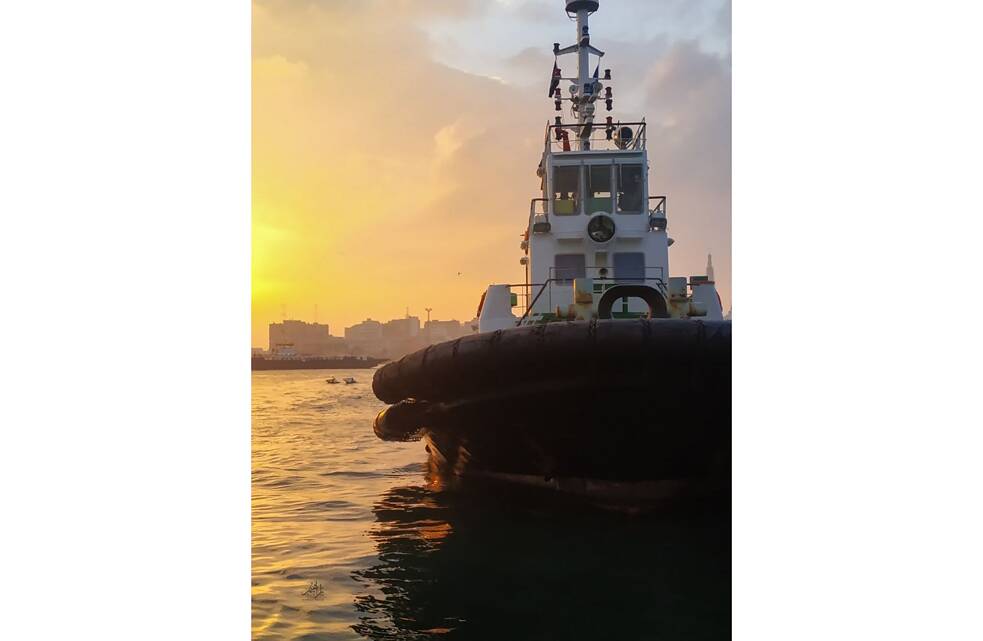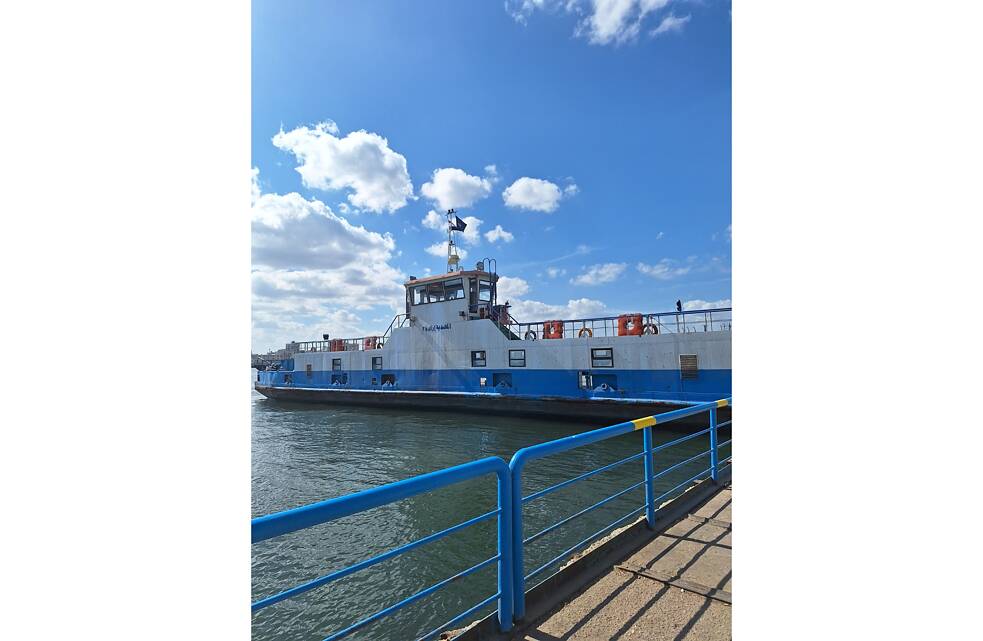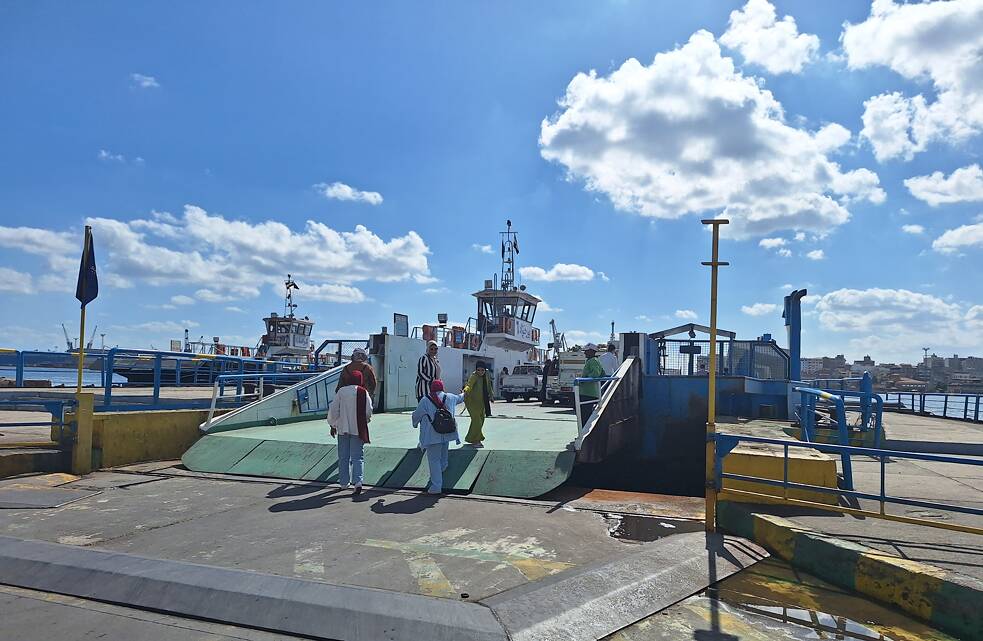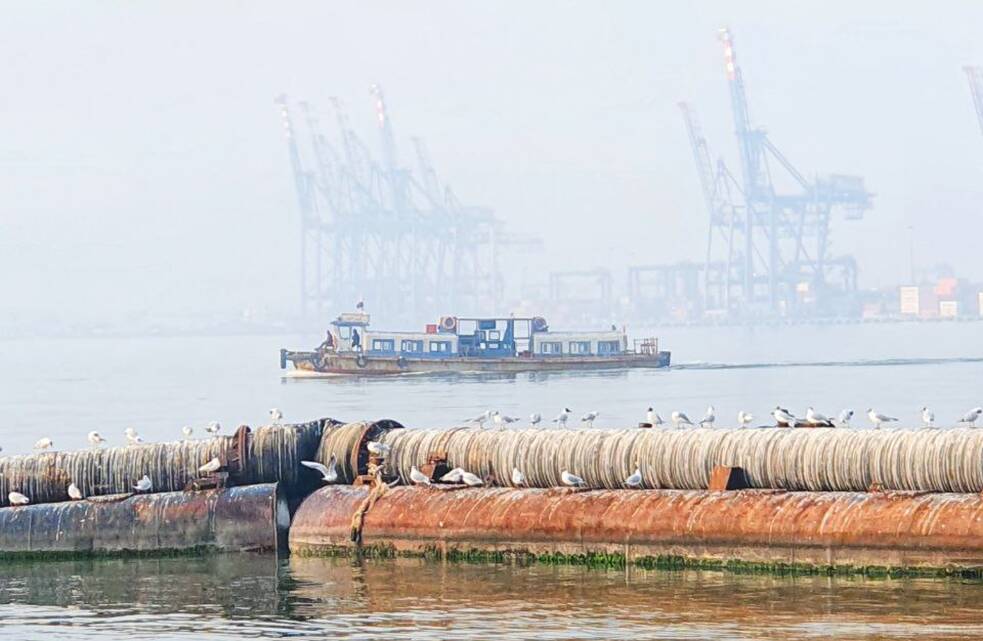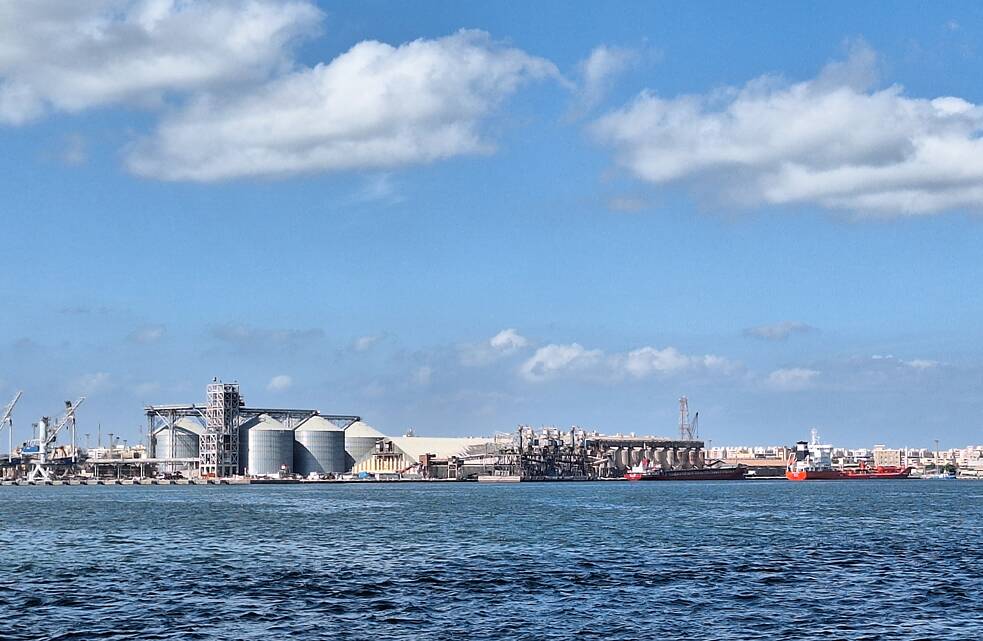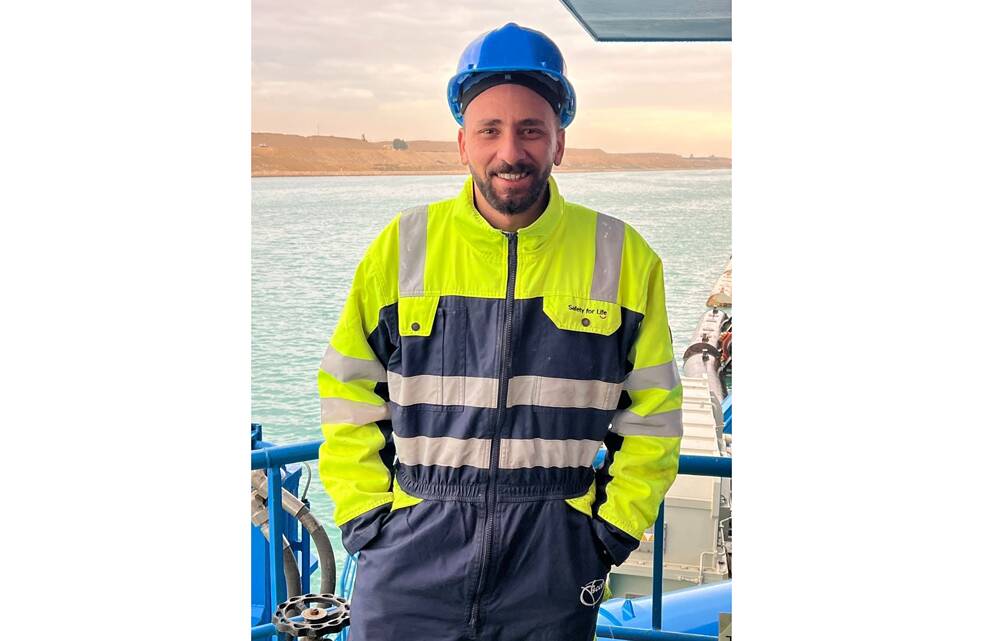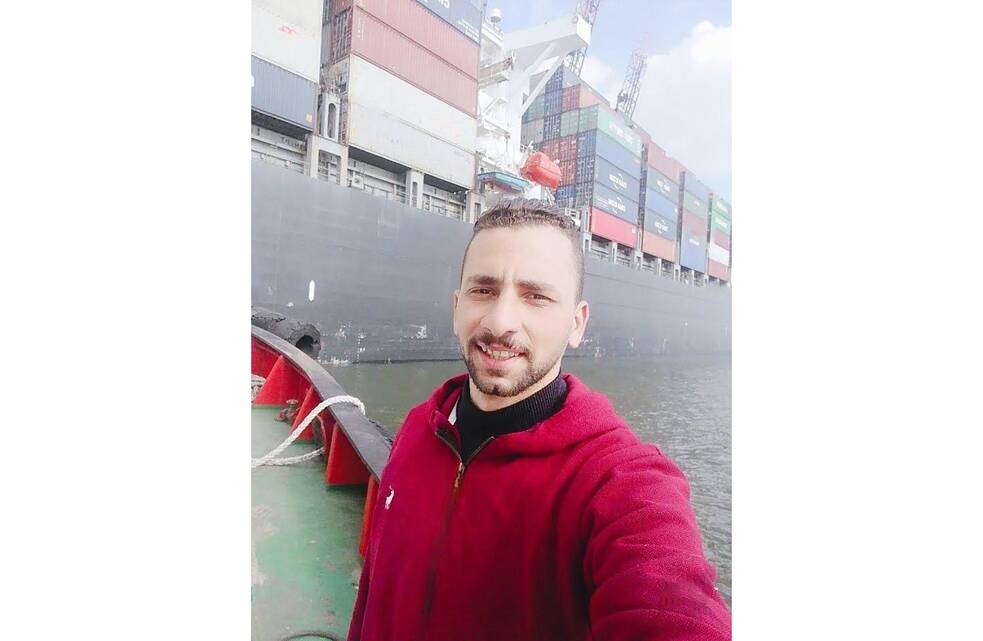The Suez Canal: for most, a symbol of global trade; for Bishoy Kamel Talaat, a place of deep, formative memories. Bishoy shares his journey from a child gazing in awe at the towering cranes of Port Said’s port to a worker who became part of the port’s close-knit community. Amid the vibrant colors of ships and the calming rhythm of the water, he found a sense of home that extends beyond mere work. Join Bishoy as he recounts his path through the world of the port and the powerful choices that always draw him back to his first love—the Port of Port Said.
My name is Bishoy Kamel Talaat, born in 1996 in Port Fuad, a city located on the eastern bank of the Suez Canal, where the canal meets the Mediterranean. One of my earliest memories is the majestic view of Port Said’s port, standing tall on the opposite shore, with its sprawling machinery and cranes silhouetted against the horizon.As a child of five or six, I would cling to the balcony of our home, gazing across the shimmering emerald waters of the canal at the vast, mysterious world of the port. Giant cranes loomed like enormous giraffes, while brightly colored ships—greens, reds, and yellows—moved in and out, their sheer size both thrilling and baffling to my young mind. Little did I know that this port would one day become my place of work, shaping my life for years to come.
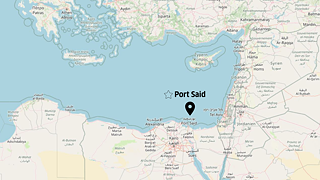
Through the mist, the port would gradually emerge, a towering spectacle of cranes, massive ships, and endless containers stacked high, each one hiding secrets from distant lands. The sounds of clanging metal and the deep hum of engines filled the air with a symphony of adventure and possibility.
Like me, the port of Port Said was born in March—three years after my own birth. In 2004, the first phase of the container terminal was inaugurated, making the port officially operational. As the port grew, so did I, transforming from a child feeding seagulls by my father’s side to a teenager exploring the city streets with friends.
I’d wander through the bustling markets of Port Said, the smell of freshly caught fish filling the air, vibrant blues, silvers, and pinks gleaming under the morning sun. Shopkeepers shouted out their wares, and I’d watch, fascinated, as the city seemed to move in rhythm with the tides.
I’d take early morning ferry rides just to feed the birds and soak in the bustling energy of the growing port. At home, I’d spend hours at my computer, searching the internet to understand what happened behind those imposing gates. I thought my online research had made me an expert on ports, but I would soon realize how mistaken I was.
The anticipation was palpable as I boarded the staff launch, a vessel reserved for employees of the canal authority. For years, the port had been a distant dream, a world closed off to outsiders. Now, I had a pass into this realm that had captivated me for so long. Excitement and nervousness mingled within me.
As I stepped inside, the sheer scale of the port overwhelmed me. It was far larger and more intricate than it had appeared from the other side of the canal. The cranes, which I had once viewed as mechanical giants, now towered above me, their size even more intimidating up close. The sounds of the port—ships’ horns, workers shouting instructions, the blaring alarms of ferries—created a cacophony of noise. Yet, amid the chaos, I felt a rush of belonging.
The port is a maze of streets and alleys, and during my first six months of training, I often got lost, wandering into unfamiliar sections. But in time, I learned its layout, and it began to feel like home. I grew accustomed to the constant hum of machinery, the hustle of workers, and the distinct smells of the ships. The sharp, pungent odor of oil tankers was strong, but nothing compared to the stench of livestock vessels, which lingered long after the ships had left. Even after six years, it still turns my stomach.
The port isn’t always a pretty sight. There are days when it feels messy and overwhelming, especially when ships dump their waste onto the docks. The trash piles up, creating a mess that irritates me to no end. But in quieter moments—particularly during winter nights when the rain falls gently—I find peace. The rain seems to cleanse the air, washing away the port's harsher smells and leaving behind the crisp, fresh scent of the sea. It’s a moment of calm in the midst of the bustling port.
Yet, despite the dangers, I quickly realized that the port was more than just a place of work—it was a community. Captain Ehab Al-Zara’a, the head of operations, made sure my injured colleague received the best care, and organized for all of us to visit him in the hospital. That moment crystallized the sense of camaraderie at the port. We weren’t just workers; we were a family, always looking out for one another.
Under the guidance of Captain Ali Saber, who treated me like his own son, I began to grow more confident in my role. His wealth of experience became my foundation, and even after six years, I continue to learn from him. The bonds I’ve formed at the port have become a source of strength in my life, extending far beyond the workplace.
After a year, my family moved to Cairo, and I faced a difficult decision: stay with my job at the port or join my family in Cairo. I chose the sea. Every time I left Port Said, I felt a suffocating tightness in my chest, as though I couldn’t breathe. The wide expanse of the sea gave me the freedom I craved, while life away from the port felt constricting.
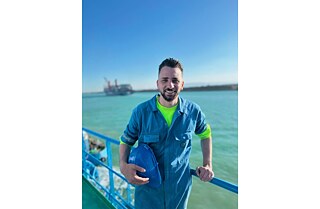
From childhood awe to his daily life as a worker, the port of Port Said has forever captured Bishoy Kamel Talaat's heart. | ©Privat
Today, I balance my time between my work at the Suez port and my life in Cairo, where I work as a salesman in a jewelry shop. But no matter where I am, my thoughts always drift back to the sea and the port of Port Said. It’s a place that has become a part of me, a place where I feel truly at home.
Though there may not be much difference between the ports of Suez and Port Said, in my heart, there is a world of difference. No matter how far I travel or how much time passes, my heart will always belong to Port Said, to the port where my story began.
This piece was published in collaboration with Egab.
10/2024
